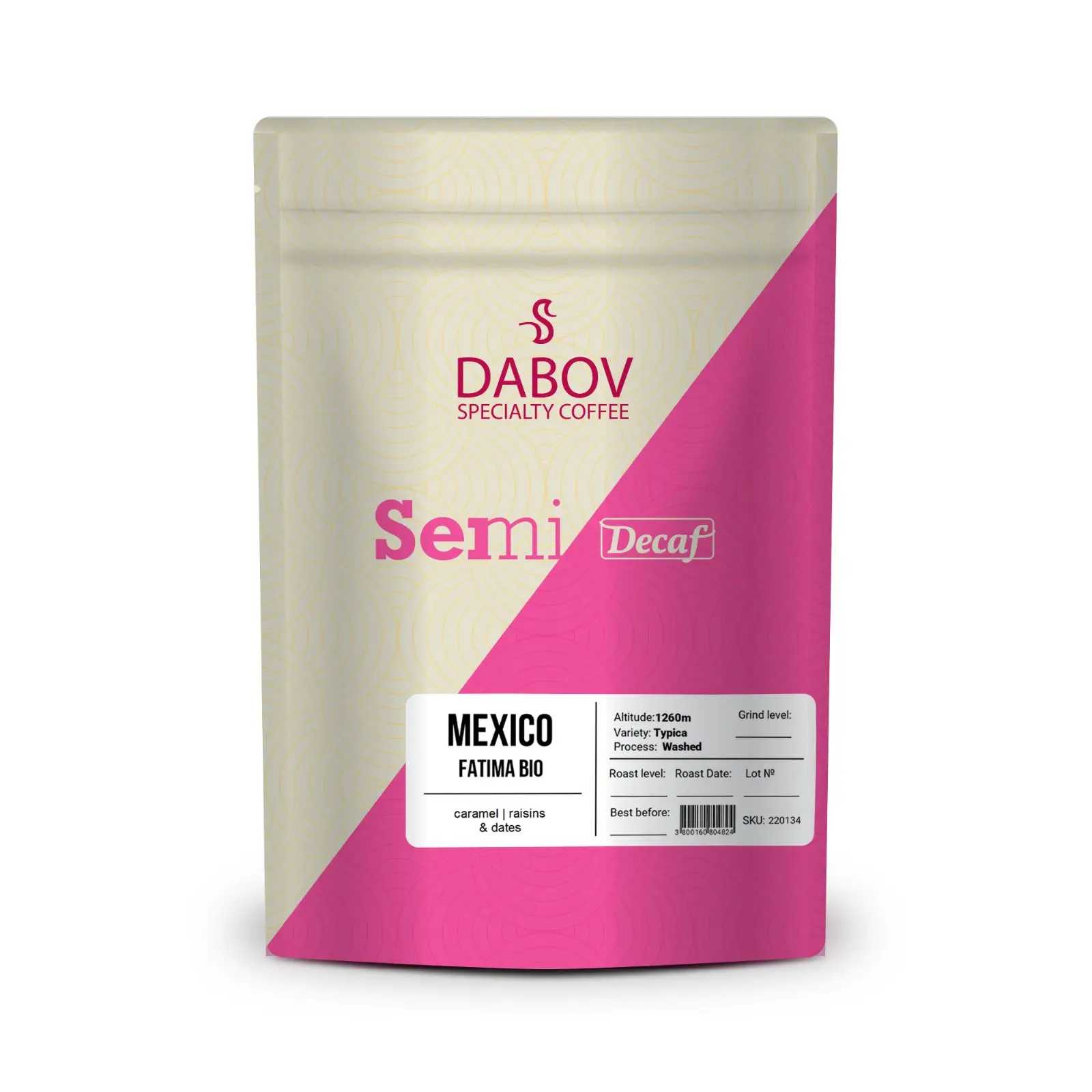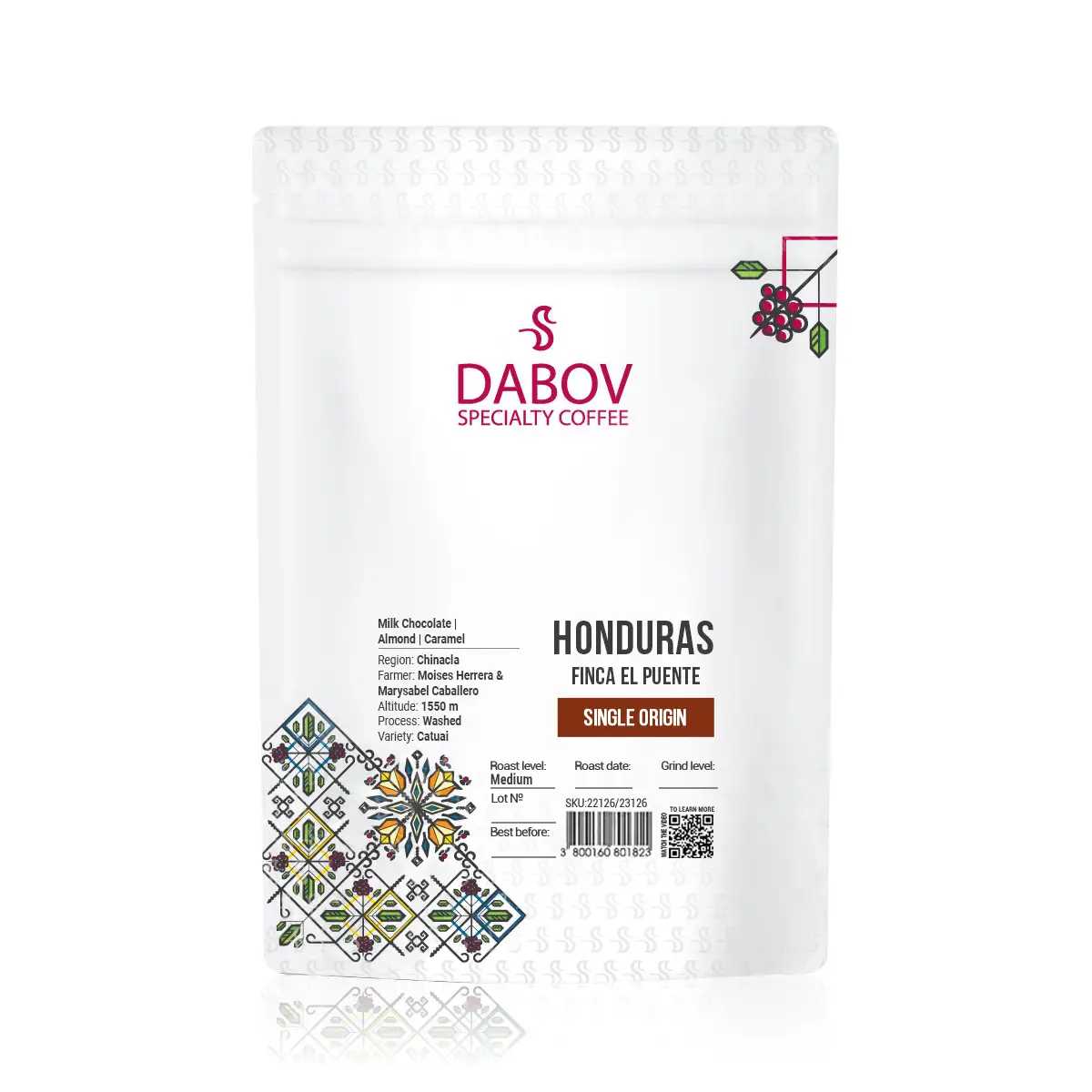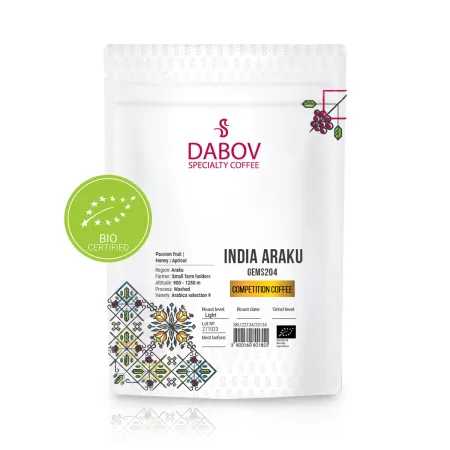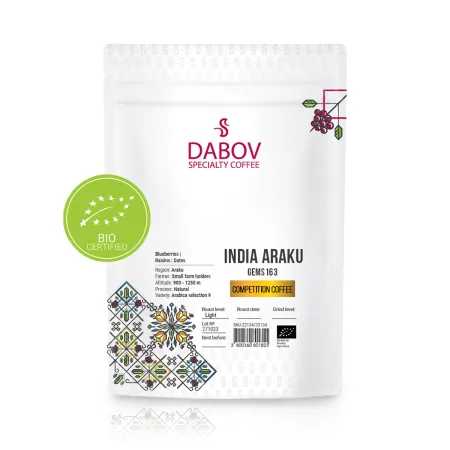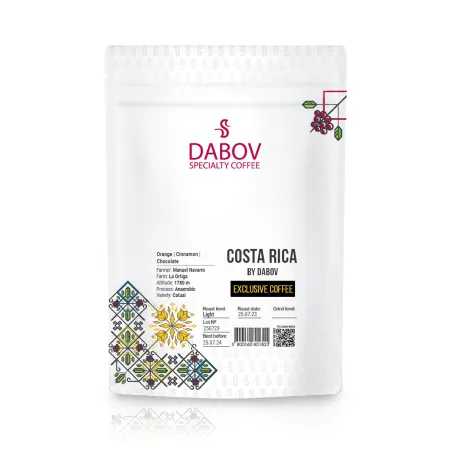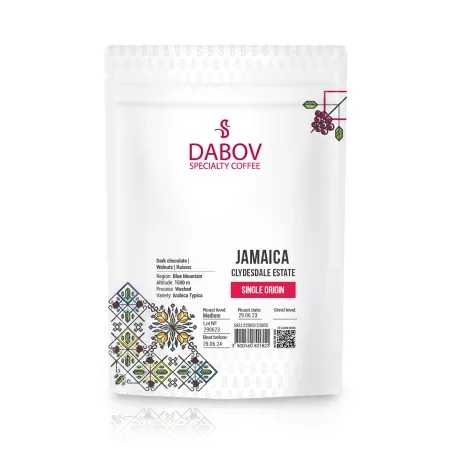How to Descale Your Coffee Machine Tips and Tricks
Descaling your coffee machine is crucial for maintaining optimal flavor and extending its life. Many people overlook this, leading to reduced performance and poor-tasting coffee. Did you know that coffee machines should be descaled every three months for best results? This article will guide you through understanding descaling, signs that your machine needs it, and provide step-by-step instructions tailored for different types of coffee makers. Additionally, you'll find essential tips for maintaining cleanliness and troubleshooting common issues. Embrace the joy of the perfect cup of coffee by ensuring your machine is always in top condition.
Coffee lovers, unite! If you're reading this, chances are you're one of the millions who rely on their trusty coffee machine to kickstart their day. But have you ever wondered why that once-perfect brew now tastes a bit off, or why your machine seems to be taking longer to produce your morning cup of joe? The culprit might be lurking inside your beloved coffee maker: limescale. In this comprehensive guide, we'll dive deep into the world of descaling coffee machines, exploring why it's crucial, how to do it effectively, and how to keep your machine in tip-top shape for years to come.
Introduction
Your coffee machine is more than just an appliance; it's a gateway to aromatic bliss and caffeinated productivity. However, like any well-used tool, it requires regular maintenance to perform at its best. Descaling is perhaps the most critical aspect of coffee machine care, yet it's often overlooked. According to a survey by the National Coffee Association, only 50% of coffee machine owners descale their machines as often as recommended by manufacturers. This neglect can lead to a host of issues, from subpar coffee taste to premature machine failure.
The purpose of this article is to arm you with the knowledge and techniques needed to descale your coffee machine like a pro. We'll explore the science behind descaling, provide step-by-step instructions for various machine types, and offer expert tips to ensure your coffee always tastes as good as it did on day one. So, grab your favorite mug, settle in, and let's embark on a journey to coffee machine perfection!
Section 1: Understanding Descaling Coffee Machines
1.1 What is Descaling?
Descaling is the process of removing mineral deposits, primarily calcium and magnesium carbonates, that accumulate inside your coffee machine over time. These deposits, collectively known as limescale, are the result of heating hard water. As water is heated and evaporates, it leaves behind these minerals, which gradually build up on the internal components of your machine.
The importance of descaling cannot be overstated. Limescale buildup can affect your machine in several ways:
- Reduced Heating Efficiency: Limescale acts as an insulator, making it harder for your machine to heat water to the optimal brewing temperature. This can result in under-extracted coffee, robbing you of the full flavor potential of your beans.
- Altered Water Flow: As scale accumulates in pipes and valves, it can restrict water flow. This not only affects brewing time but can also lead to uneven extraction, further impacting taste.
- Component Damage: Over time, severe scale buildup can damage vital parts of your machine, potentially leading to costly repairs or even replacement.
- Flavor Contamination: Limescale can impart a metallic or chalky taste to your coffee, masking the subtle flavors and aromas you've come to love.
- Reduced Machine Lifespan: Regular descaling can significantly extend the life of your coffee machine, saving you money in the long run.
Understanding the chemistry behind limescale formation can help you appreciate the descaling process. When water containing dissolved calcium bicarbonate is heated, it undergoes a chemical reaction:
Ca(HCO₃)₂ → CaCO₃ + CO₂ + H₂O
This reaction produces solid calcium carbonate (CaCO₃), which is the primary component of limescale. Descaling solutions work by dissolving this calcium carbonate, effectively reversing the process and restoring your machine to its original condition.
1.2 Signs Your Coffee Machine Needs Descaling
Recognizing the signs that your coffee machine needs descaling is crucial for maintaining optimal performance and coffee quality. Here are some common indicators to watch out for:
- Slower Brewing Time: If your machine is taking longer than usual to brew coffee, it could be a sign of scale buildup restricting water flow.
- Unusual Noises: Gurgling, hissing, or louder-than-normal pump sounds can indicate that scale is interfering with normal operation.
- White Residue: Look for chalky white deposits on visible parts of your machine, especially around the water spout or in the water reservoir.
- Changes in Coffee Taste: If your coffee starts tasting bitter, metallic, or simply "off," limescale could be the culprit.
- Inconsistent Water Temperature: Scale buildup can prevent your machine from reaching the optimal brewing temperature, resulting in lukewarm coffee.
- Visible Scale in the Carafe: Small white flakes floating in your coffee or adhering to the sides of the carafe are a clear sign of scale buildup.
- Reduced Water Flow: If you notice that less water is coming out of the machine during brewing, scale may be obstructing the water passages.
- Steam Wand Issues: For espresso machines, a clogged or weak steam wand can indicate scale accumulation.
The consequences of neglecting to descale your coffee machine can be severe. Beyond the immediate impact on coffee quality, prolonged scale buildup can lead to:
- Permanent damage to heating elements
- Clogged valves and pumps
- Increased energy consumption due to reduced efficiency
- Potential bacterial growth in areas where water flow is restricted
In extreme cases, severe scale buildup can render a machine unusable, necessitating expensive repairs or complete replacement. Regular descaling not only ensures the best possible coffee but also protects your investment in your beloved brewing equipment.
Section 2: The Process of Descaling Your Coffee Machine
2.1 Tools and Materials Required
Before embarking on your descaling journey, it's essential to gather all the necessary tools and materials. Having everything at hand will make the process smoother and more efficient. Here's a comprehensive checklist of what you'll need:
- Descaling Solution: The cornerstone of the descaling process. Choose a solution specifically designed for coffee machines.
- Water: Preferably filtered or distilled water to avoid introducing new minerals during the process.
- Measuring Cups: For accurately mixing the descaling solution.
- Clean Cloths or Paper Towels: To wipe down parts of the machine and clean up any spills.
- Soft Brush or Toothbrush: For gently scrubbing accessible areas with scale buildup.
- Large Bowl or Sink: To catch water during the rinsing process.
- Gloves: To protect your hands from the descaling solution, which can be harsh on skin.
- User Manual: Always consult your machine's specific instructions for any model-specific requirements.
- Timer: To keep track of soaking and rinsing times.
- Empty Carafe or Container: To collect the descaling solution as it runs through the machine.
When it comes to choosing a descaling solution, there are several options available, each with its pros and cons:
- Citric Acid: A natural, food-safe option that's effective and gentle on machines. It's often the preferred choice for high-end espresso machines.
- Vinegar: While readily available and inexpensive, vinegar can leave a lingering odor and taste. It's also less effective than commercial descalers.
- Commercial Descaling Solutions: These are specifically formulated for coffee machines and often include additional cleaning agents. They're highly effective but can be more expensive.
- Lactic Acid: Another natural option that's gentler than citric acid but still effective at removing scale.
Brand-specific recommendations can vary, but some popular and effective descaling products include:
- Urnex Dezcal Coffee and Espresso Machine Descaler
- Durgol Swiss Espresso Special Decalcifier
- De'Longhi EcoDecalk Natural Descaler
- Saeco CA6700 Espresso Machine Descaler
Always check your machine's warranty and manufacturer recommendations before choosing a descaling product, as using the wrong type could potentially void your warranty or damage your machine.
2.2 Step-by-Step Descaling Instructions
Now that you've gathered your materials, it's time to dive into the descaling process. While specific steps may vary slightly depending on your machine type, here's a general guide that applies to most coffee makers:
- Preparation:
- Unplug your machine and allow it to cool completely.
- Remove any removable parts like the water reservoir, carafe, and filter basket.
- If your machine has a water filter, remove it before descaling.
- Mixing the Solution:
- Follow the instructions on your chosen descaling product for the correct ratio of descaler to water.
- If using a commercial descaler, mix it with water in the water reservoir according to the package directions.
- For natural solutions like citric acid, mix about 2 tablespoons per liter of water.
- Running the Descaling Cycle:
- Pour the descaling solution into the water reservoir.
- Place an empty container under the coffee outlet to catch the solution.
- Run a brew cycle without coffee grounds, allowing about half of the solution to pass through.
- Turn off the machine and let it sit for 15-30 minutes to allow the solution to work on stubborn scale deposits.
- Complete the brew cycle, allowing the remaining solution to pass through.
- Rinsing:
- Remove and rinse the water reservoir thoroughly.
- Fill the reservoir with fresh water and run at least two full brew cycles to rinse out any remaining descaling solution.
- Wipe down all external parts of the machine with a damp cloth.
- Reassembly:
- Once rinsing is complete, reassemble all removable parts.
- Replace the water filter if your machine uses one.
For specific machine types, there are some additional considerations:
Drip Coffee Makers:
- These machines are generally the simplest to descale, following the steps above.
- Pay special attention to cleaning the shower head, where water drips onto the grounds, as this area is prone to scale buildup.
Espresso Machines:
- For machines with a steam wand, run some descaling solution through the wand as well.
- After descaling, it's crucial to "backflush" the machine by running clean water through the group head and portafilter.
- Some high-end espresso machines have built-in descaling programs; consult your manual for instructions.
Single-Serve Machines:
- These often have specific descaling procedures outlined by the manufacturer.
- For Keurig machines, for example, you'll need to perform the process without a K-cup in place.
- Run several short brew cycles with the descaling solution, followed by thorough rinsing cycles.
Remember, the key to effective descaling is patience and thoroughness. Don't rush the process, and always ensure you've rinsed the machine completely before brewing coffee again.
2.3 Important Tips for Effective Descaling
To get the most out of your descaling efforts and maintain your coffee machine's performance, consider these expert tips:
- Timing and Frequency:
- The frequency of descaling depends on your water hardness and machine usage.
- As a general rule, descale every 3-6 months for moderate use in areas with average water hardness.
- For areas with very hard water or heavy machine use, monthly descaling may be necessary.
- Some modern machines have built-in water hardness sensors and will alert you when descaling is needed.
- Water Quality Matters:
- Using filtered or softened water can significantly reduce scale buildup, extending the time between descaling sessions.
- Consider installing a water softener or using a Brita filter for your coffee machine water.
- Regular Maintenance:
- Don't wait for visible signs of scale before descaling. Regular, preventative maintenance is key.
- Mark your calendar or set reminders for regular descaling sessions.
- Temperature Considerations:
- Some descaling solutions work best at specific temperatures. Always follow the manufacturer's instructions.
- For machines without a heating element (like cold brew makers), you may need to use warm water to mix the descaling solution for optimal effectiveness.
- Dos and Don'ts:
- DO read your machine's manual before descaling. Some manufacturers have specific requirements or procedures.
- DON'T use abrasive materials to scrub internal parts of your machine, as this can cause damage.
- DO descale all components of your machine, including the water reservoir and any removable parts.
- DON'T skip the rinsing process. Thorough rinsing is crucial to remove all traces of the descaling solution.
- Safety First:
- Always unplug your machine before beginning the descaling process.
- Wear gloves to protect your hands from the descaling solution.
- Ensure proper ventilation when using chemical descalers.
- Post-Descaling Care:
- After descaling, brew and discard one pot of coffee to ensure any residual taste from the descaling process is eliminated.
- Clean and dry all external parts of the machine thoroughly.
- Natural Alternatives:
- While commercial descalers are often most effective, natural alternatives like citric acid or a vinegar solution can be used occasionally for light maintenance.
- If using vinegar, be prepared for extra rinsing to remove the odor.
- Professional Service:
- For high-end or commercial machines, consider professional descaling services annually or as recommended by the manufacturer.
- This can help catch any potential issues early and ensure your machine receives expert care.
By following these tips and maintaining a regular descaling routine, you'll ensure that your coffee machine continues to produce delicious, high-quality coffee for years to come. Remember, a well-maintained machine not only performs better but also lasts longer, saving you money and ensuring you never have to face a morning without your perfect cup of coffee.
Section 3: Cleaning Your Coffee Machine
3.1 The Importance of Regular Maintenance
While descaling is a crucial aspect of coffee machine care, it's just one part of a comprehensive maintenance routine. Regular cleaning goes beyond descaling to ensure every component of your machine is functioning optimally and producing the best possible coffee. Here's why regular maintenance is so important:
- Flavor Preservation: Coffee oils and residue can build up over time, affecting the taste of your brew. Regular cleaning removes these deposits, ensuring each cup tastes as fresh as the first.
- Hygiene: Coffee machines can be breeding grounds for bacteria and mold if not properly maintained. Regular cleaning prevents the growth of these microorganisms, keeping your coffee safe and healthy.
- Longevity: A well-maintained machine lasts longer. Regular cleaning prevents wear and tear on components, potentially saving you money on repairs or replacements.
- Consistency: Clean machines produce more consistent results, ensuring that your coffee tastes great cup after cup.
- Energy Efficiency: A clean machine operates more efficiently, potentially saving on energy costs over time.
Beyond descaling, here are some key maintenance tasks to incorporate into your routine:
- Cleaning the Brew Basket: Remove and wash the brew basket regularly to prevent coffee oil buildup.
- Carafe Care: Clean your carafe daily with warm, soapy water to prevent staining and residue buildup.
- Wiping Down Exterior: Regularly wipe down the exterior of your machine to prevent dust accumulation and maintain its appearance.
- Cleaning the Water Reservoir: Periodically clean and dry the water reservoir to prevent mold growth.
- Checking Seals and Gaskets: Inspect rubber seals and gaskets for wear and replace as needed to prevent leaks.
The benefits of regular cleaning extend beyond just better-tasting coffee. A clean machine is more reliable, less likely to develop unexpected issues, and provides peace of mind knowing that your daily brew is coming from a hygienic source. Moreover, regular maintenance allows you to become familiar with your machine's components, making it easier to spot potential problems early on.
3.2 Best Practices for Cleaning Your Coffee Machine
To keep your coffee machine in prime condition, it's essential to establish a regular cleaning routine. Here's a comprehensive guide to daily, weekly, and monthly cleaning practices:
Daily Cleaning Tips:
- Rinse Removable Parts: After each use, rinse the carafe, filter basket, and any other removable parts with warm water.
- Wipe Down the Exterior: Use a damp cloth to wipe the exterior of the machine, paying special attention to the warming plate and any areas where coffee might have splashed.
- Empty and Rinse the Carafe: Don't let coffee sit in the carafe for extended periods. Rinse it thoroughly after each use.
- Leave the Reservoir Lid Open: This allows the interior to dry completely, preventing mold growth.
- Clean the Drip Tray: For espresso machines, empty and wipe down the drip tray daily.
Weekly Cleaning Routine:
- Deep Clean Removable Parts: Wash the carafe, filter basket, and other removable parts with warm, soapy water. For stubborn stains, use a mixture of water and baking soda.
- Clean the Water Reservoir: Empty the reservoir and wipe it down with a soft cloth. If your machine allows, run the reservoir through the dishwasher.
- Wipe Down Internal Components: Use a damp cloth to clean around the spray head and basket area, removing any coffee grounds or residue.
- Clean the Steam Wand: For espresso machines, purge and wipe down the steam wand after each use, and soak the tip in a cleaning solution weekly.
- Run a Vinegar Cycle: For a quick clean, run a brew cycle with equal parts water and white vinegar, followed by two cycles of clean water.
Monthly and Yearly Maintenance:
- Descale: Perform a full descaling process as outlined in the previous section.
- Replace Water Filters: If your machine uses a water filter, replace it every 2-3 months or as recommended by the manufacturer.
- Inspect Gaskets and Seals: Check for wear and tear on gaskets and seals, replacing them if necessary.
- Clean Internal Components: For machines that allow it, disassemble and clean internal components like the brew head and group head.
- Professional Service: Consider having your machine professionally serviced annually, especially for high-end or commercial models.
Advanced Cleaning Tips:
- Use Specialized Cleaning Products: Coffee machine cleaning tablets or powders can be more effective than home remedies for removing coffee oils and residue.
- Backflush Espresso Machines: For espresso machines, perform a backflush with a proper cleaning solution monthly to clean the solenoid valve and other internal components.
- Clean the Grinder: If your machine has a built-in grinder, clean it regularly to prevent old grounds from affecting flavor.
- Calibrate Your Machine: Periodically check and adjust the brewing temperature and pressure settings to ensure optimal performance.
- Address Mineral Buildup: In areas with hard water, consider using a water softener or filtered water to reduce mineral buildup between descaling sessions.
By incorporating these cleaning practices into your routine, you'll ensure that your coffee machine remains in excellent condition, producing delicious coffee for years to come. Remember, a clean machine is a happy machine, and a happy machine makes happy coffee drinkers!
Section 4: Additional Tips and Tricks for Coffee Maker Care
4.1 Best Practices for Longevity
Ensuring the longevity of your coffee machine goes beyond regular cleaning and descaling. By adopting certain habits and best practices, you can significantly extend the life of your beloved brewing companion. Here are some expert tips to keep your coffee maker running smoothly for years to come:
- Optimal Placement:
- Position your machine on a level, stable surface away from heat sources and sinks.
- Ensure adequate ventilation around the machine to prevent overheating.
- Avoid placing the machine in direct sunlight, which can affect internal components and degrade plastic parts over time.
- Water Quality Matters:
- Use filtered or bottled water to reduce mineral buildup and improve coffee taste.
- Consider installing a water softener if you live in an area with very hard water.
- Avoid using distilled water exclusively, as some minerals are necessary for proper machine function and coffee flavor.
- Power Management:
- Use a surge protector to safeguard your machine from power fluctuations.
- Turn off and unplug the machine when not in use for extended periods.
- Allow the machine to cool down completely before storing or moving it.
- Regular Inspections:
- Periodically check cords and plugs for any signs of wear or damage.
- Inspect seals and gaskets for degradation, replacing them as needed.
- Listen for any unusual noises during operation, which could indicate developing issues.
- Temperature Considerations:
- Allow the machine to reach optimal brewing temperature before use.
- Avoid rapid temperature changes, such as running cold water through a hot machine.
- Proper Usage:
- Follow the manufacturer's guidelines for water-to-coffee ratios.
- Don't overfill the water reservoir or coffee basket.
- Use the appropriate grind size for your machine type to prevent clogs and ensure optimal extraction.
- Storage and Travel:
- If storing the machine long-term, clean and dry all components thoroughly.
- For travel or periods of non-use, consider using a food-grade machine cleaner to prevent mold growth.
- Accessory Care:
- Regularly clean and maintain accessories like milk frothers, grinders, and water filters.
- Replace paper filters, if used, with each brew for the best taste and to prevent residue buildup.
- Professional Maintenance:
- Schedule annual check-ups with a professional technician, especially for high-end or commercial machines.
- Keep records of maintenance and repairs for warranty purposes and to track the machine's history.
- Software Updates:
- For smart coffee makers, ensure the firmware is up to date to benefit from the latest features and bug fixes.
By implementing these best practices, you're not just maintaining your coffee machine; you're investing in its future. A well-cared-for machine will reward you with consistently great coffee and reliable performance for many years, making your initial investment even more worthwhile.
4.2 Troubleshooting Common Issues
Even with the best care, coffee machines can sometimes encounter issues. Being able to troubleshoot common problems can save you time, money, and the inconvenience of being without your daily brew. Here are some frequent issues and their potential solutions:
- Machine Not Turning On:
- Check if it's properly plugged in and the outlet is working.
- Inspect the power cord for damage.
- Look for a reset button on the machine, often found on the bottom or back.
- Coffee Tastes Off:
- Clean the machine thoroughly, including all removable parts.
- Check the water quality and consider using filtered water.
- Ensure you're using fresh, quality coffee beans.
- Verify that the water temperature is correct (ideally between 195°F and 205°F for brewing).
- Weak or Watery Coffee:
- Adjust the coffee-to-water ratio, using more coffee grounds.
- Check if the grind size is appropriate for your brewing method.
- Ensure the water is hot enough for proper extraction.
- Machine Leaking Water:
- Check for cracks in the water reservoir or carafe.
- Inspect seals and gaskets for wear and replace if necessary.
- Ensure the machine is on a level surface.
- Slow Brewing or Clogging:
- Descale the machine if you haven't recently.
- Check for any blockages in the water lines or spray head.
- Ensure you're using the correct grind size for your machine.
- Unusual Noises:
- For gurgling sounds, the machine may need descaling.
- Grinding or loud pump noises could indicate a need for professional service.
- Espresso Machine Not Producing Crema:
- Check the freshness of your coffee beans.
- Adjust the grind size and tamping pressure.
- Verify that the machine is reaching the correct pressure (typically 9 bars for espresso).
- Steam Wand Not Working Properly:
- Clean the steam wand thoroughly, soaking the tip if necessary.
- Check for blockages in the steam wand.
- Ensure the machine is reaching the correct temperature for steam production.
FAQ Section:
Q: How often should I descale my coffee machine?A: Generally, every 3-6 months, but more frequently in areas with hard water or with heavy use.
Q: Can I use vinegar to descale my machine?A: While vinegar can work, it's less effective than commercial descalers and may leave a lingering odor. It's best to use products specifically designed for coffee machines.
Q: Will descaling affect my machine's warranty?A: Proper descaling shouldn't affect your warranty. In fact, many manufacturers require regular descaling to maintain the warranty. Always use manufacturer-approved descaling methods.
Q: My coffee tastes bitter after descaling. What should I do?A: Run several cycles of clean water through the machine to ensure all descaling solution is removed. If the taste persists, clean all removable parts thoroughly.
Q: Is it normal for my machine to be louder after descaling?A: A slight increase in noise immediately after descaling is normal as air bubbles work their way through the system. If loud noises persist, consult a professional.
By familiarizing yourself with these troubleshooting tips and FAQs, you'll be well-equipped to handle most common coffee machine issues. Remember, when in doubt, consult your machine's manual or reach out to the manufacturer's customer support for guidance. Regular maintenance and prompt attention to any developing issues will keep your coffee flowing smoothly for years to come.
Conclusion
As we wrap up our comprehensive guide to descaling and maintaining your coffee machine, let's recap the key points that will ensure your brewing companion continues to produce exceptional coffee for years to come:
- Regular Descaling is Crucial: Descaling removes mineral buildup that can affect your machine's performance and coffee taste. Aim to descale every 3-6 months, or more frequently if you have hard water or use your machine heavily.
- Cleaning Goes Beyond Descaling: Daily, weekly, and monthly cleaning routines are essential for maintaining hygiene, preserving flavor, and extending your machine's lifespan.
- Use the Right Products: While there are various descaling methods, using products specifically designed for coffee machines often yields the best results and safeguards your machine's components.
- Pay Attention to Signs: Be vigilant about changes in brewing time, coffee taste, or machine noises, as these can indicate the need for descaling or maintenance.
- Water Quality Matters: Using filtered water can significantly reduce scale buildup and improve coffee taste.
- Regular Maintenance Saves Money: Consistent care prevents costly repairs and replacements, making your initial investment in a quality coffee machine even more worthwhile.
- Troubleshoot Wisely: Familiarize yourself with common issues and their solutions to handle minor problems confidently.
- When in Doubt, Consult Experts: For complex issues or high-end machines, don't hesitate to seek professional assistance.
The journey to the perfect cup of coffee doesn't end with buying a great machine—it continues with how you care for it. By implementing the tips and techniques outlined in this guide, you're not just maintaining an appliance; you're preserving a daily ritual that brings joy and energy to your life.
We encourage you to start your descaling and maintenance routine today. Set reminders for regular descaling sessions, create a cleaning schedule that works for you, and pay attention to your machine's needs. Your future self will thank you as you continue to enjoy rich, flavorful coffee brewed to perfection.
Remember, a well-maintained coffee machine is a reliable partner in your daily routine, ready to brew that perfect cup whenever you need it. Here's to many more years of delicious coffee, courtesy of your well-cared-for machine. Happy brewing!
Additional Resources
To further enhance your coffee machine maintenance knowledge and ensure you have access to the best products and information, we've compiled a list of valuable resources:
Recommended Descaling Products:
- Urnex Dezcal Coffee and Espresso Machine Descaler
- Durgol Swiss Espresso Special Decalcifier
- De'Longhi EcoDecalk Natural Descaler
Cleaning Supplies:
- Pallo Grindminder Brush - Excellent for cleaning grinders and hard-to-reach areas
- Cafiza Espresso Machine Cleaning Tablets - For deep cleaning espresso machines
Water Filtration Solutions:
- Brita Longlast Water Filter - Helps reduce scale buildup in machines
- BWT Water Filter Jug - Specifically designed to optimize water for coffee brewing
Further Reading:
- The Science of Great Coffee - Delve deeper into the chemistry of coffee extraction
- Coffee Machine Maintenance Guide - Comprehensive resource for various machine types
- Understanding Water Quality for Coffee - Learn how water affects your brew
Video Tutorials:
- How to Descale a Drip Coffee Maker
- Espresso Machine Maintenance Tips
- Troubleshooting Common Coffee Machine Issues
Mobile Apps:
- Coffee Machine Maintenance Tracker - Set reminders for cleaning and descaling
- Water Hardness Tester - Determine your local water hardness to optimize descaling frequency
These resources will provide you with additional tools and knowledge to keep your coffee machine in top condition. Remember, investing time in learning about and caring for your machine will pay dividends in the form of consistently great coffee for years to come. Happy brewing, and may your coffee always be perfect!



